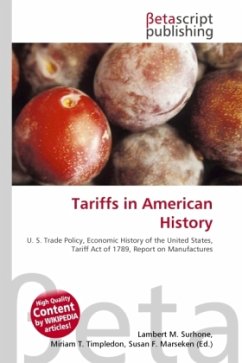High Quality Content by WIKIPEDIA articles! The Tariff Act of 1789 imposed the first national source of revenue for the newly formed United States. The new Constitution allowed only the federal government to levy tariffs, so the old system of state rates disappeared. The new law taxed all imports at rates from 5 to 15 percent. These rates were primarily designed to generate revenue to pay the national debt and annual expenses of the federal government. In his Report on Manufactures Treasury Secretary Alexander Hamilton proposed a far-reaching plan to use protective tariffs as a lever for rapid industrialization. His proposals were not adopted. The high protectionism Hamilton called for was not adopted until after the War of 1812 when nationalists like Henry Clay and John C. Calhoun wanted more industry so the nation would have a balanced economy.








